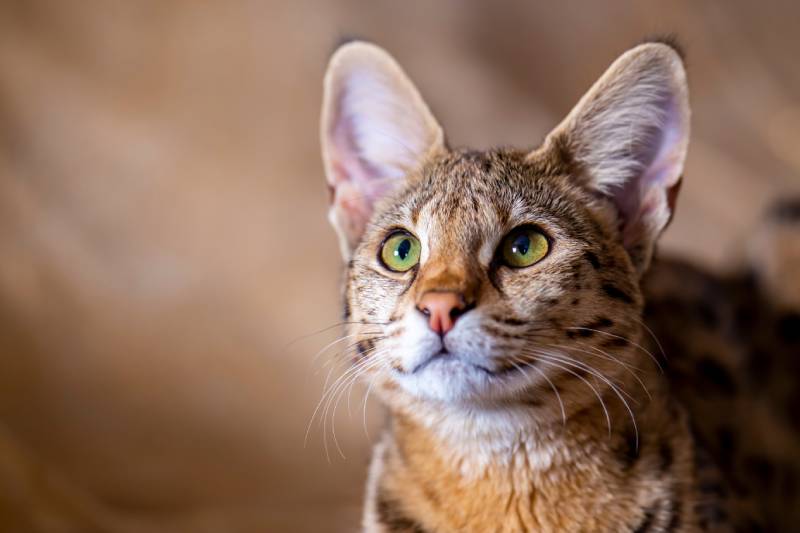How To Provide Mental Stimulation for Cats: 13 Options
Updated on
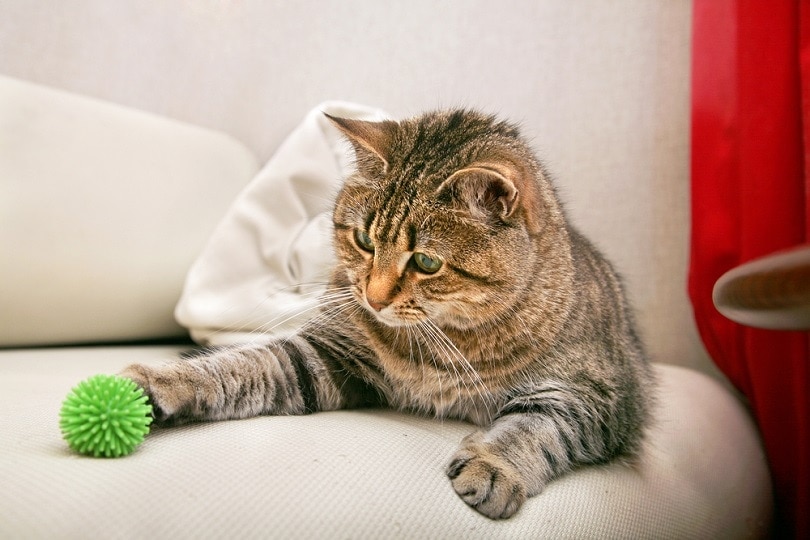
Cats are intelligent animals that require mental stimulation to keep them active and entertained. Understimulated cats are prone to developing behavioral problems, such as destructive behaviors, aggression, and hyperactivity. It’s necessary to provide mental stimulation to your cat, and it is especially important for indoor cats since they cannot explore a large environment.
Keeping your cat indoors is ideal for your cat’s safety and the natural environment, but it does create some challenges in keeping your cat entertained. Here are some of the best ways to keep your cat active, stimulated, and happy.
Top 13 Options to Provide Mental Stimulation for Cats
1. Rotate Toys
Playing with the same toys over and over can get boring for your cat. Imagine if you only got to play with the same game or toy every day of your life without ever getting to leave the house or change things up. That is how your cat feels playing with the same one or two toys every day!
By providing a rotation of toys to your cat, you’ll be able to keep their brain active and encourage interaction with the toys. It’s a good idea to keep a selection of toys on rotation. On occasion, you only need to add new toys to the toy collection to keep things fresh and interesting.
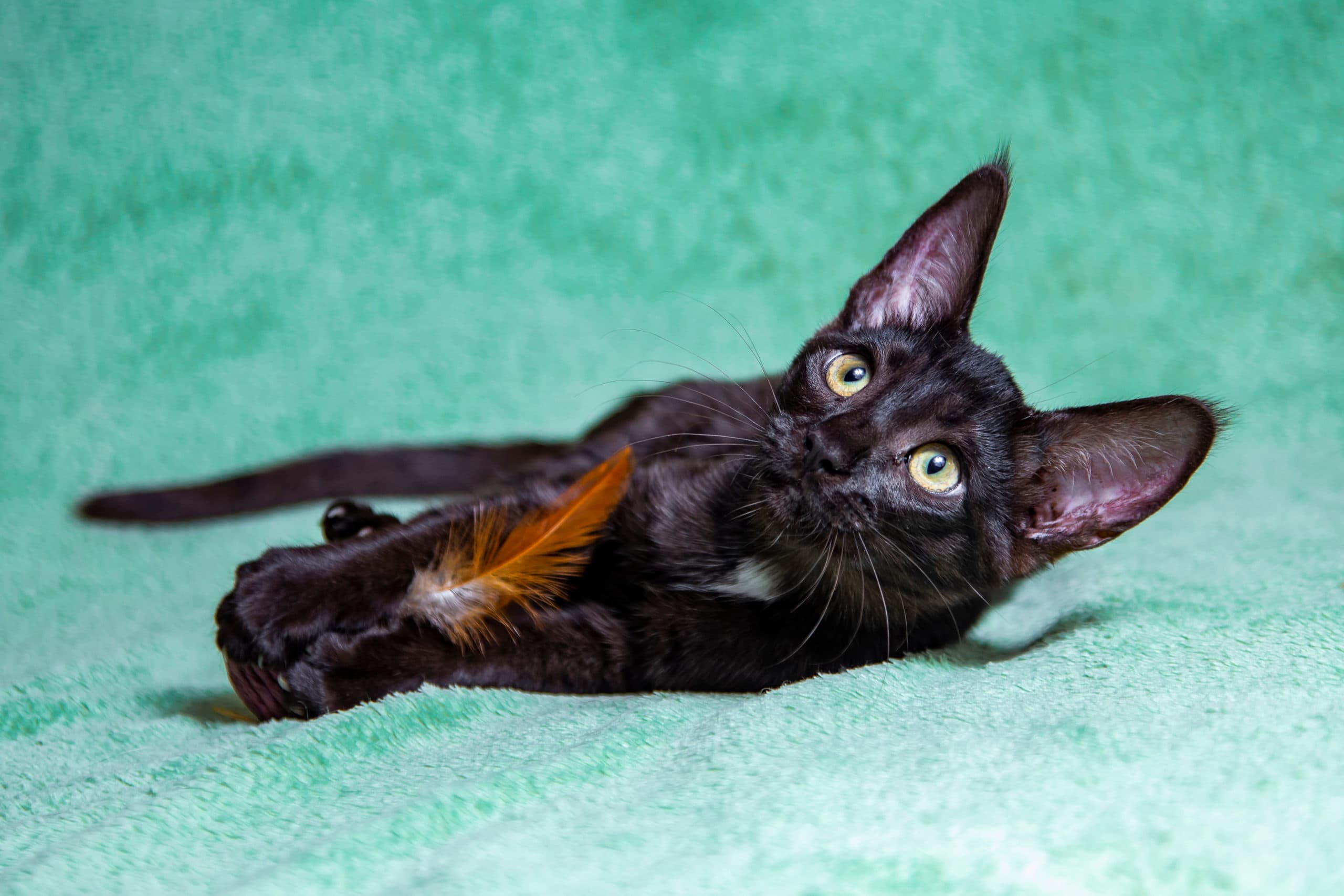
- Keeps your cat interested in their toys
- Provides a mental workout
- Doesn’t require tons of toys or purchases
- Does require a rotation to keep things interesting
2. Build a Catio
Catios are a fantastic way to keep your cat mentally stimulated and provide them safe access to the outdoors. Catios allow your cat to spend time in the sun and fresh air without having free range of the whole neighborhood. This stimulates your cat by offering plenty of interesting smells, sounds, and sights.
Some catios can even be built to allow your cat to come and go as they please, allowing them to decide when they’re feeling a little outside time and when they’d rather nap indoors.
- Allows safe outdoor time
- Can be built to suit your space
- Offers a constant supply of interesting things
- May be difficult to work out the logistics
3. Go For Walks
This may not be the solution for every cat, but many cats enjoy going for walks. Slowly train your cat to be comfortable with a harness and a leash, then begin going for short trips out of the house. It may take time and effort to properly train your cat to use a harness and leash and to be comfortable in the outdoors, but this does often pay off.
Going for walks allows your cat-controlled outdoor access while having the opportunity to explore and sniff. Going for regular walks can also be a great way to build your cat’s confidence.
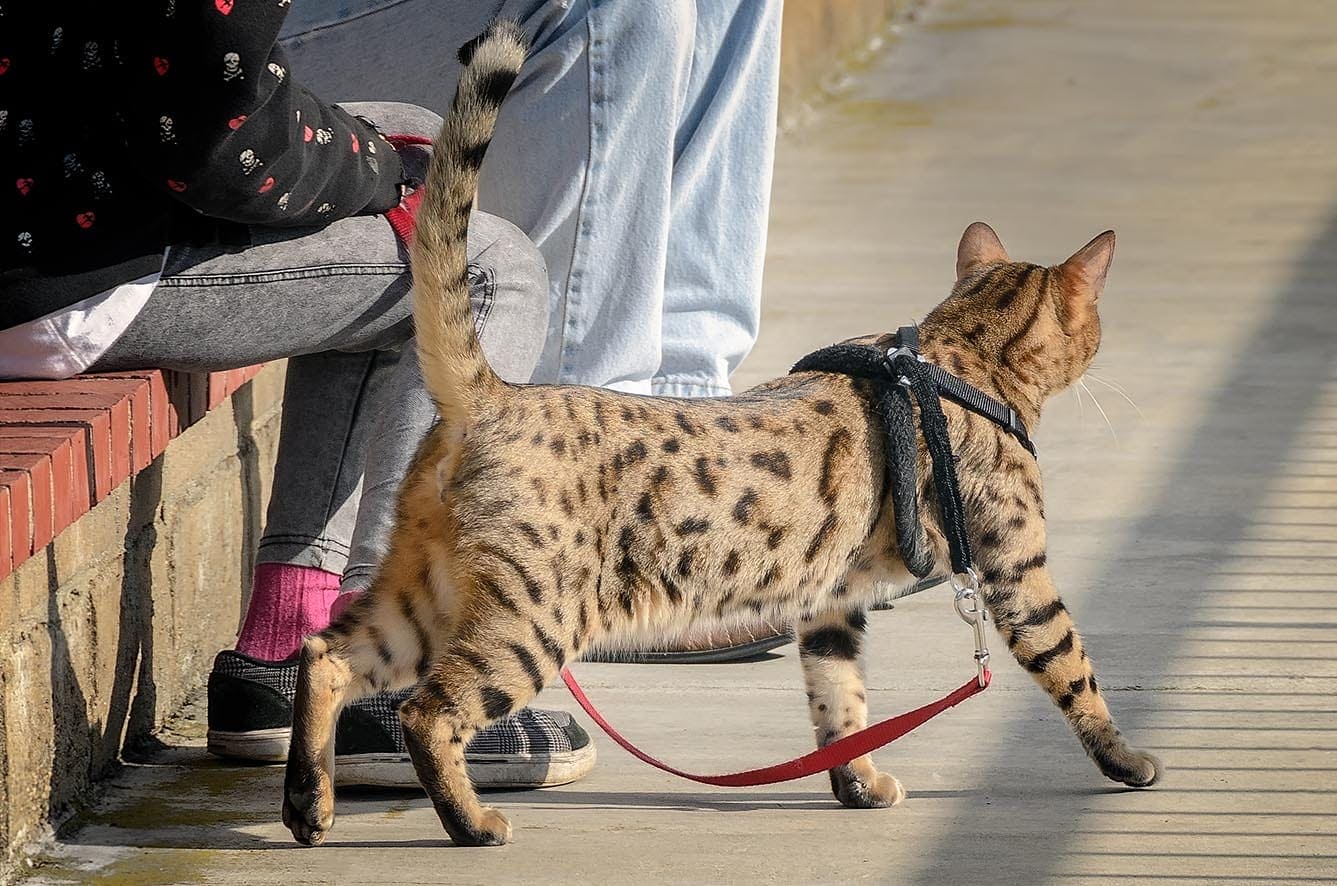
- Can be effective when your cat is properly trained
- Allows controlled outdoor access
- May help build your cat’s confidence
- Does require training and time
- Not a viable option for every cat
4. Train Your Cat
Training your cat to perform tricks and tasks is a good way to offer mental stimulation, building brain power in the process. Some cats will naturally perform tricks, like fetching objects, and all you’ll have to do is encourage the natural behavior, building on it to teach new tricks. With other cats, you will be in a starting-from-scratch type of situation, so it may take time to identify tricks that your cat may be willing or able to learn.
With patience and positive reinforcement, most cats can be taught to perform a variety of tricks. Training builds confidence and supports the bond between humans and cats.
- Builds brain power
- Comes naturally to some cats
- Most cats can be trained
- Builds confidence and supports your bond with your cat
- May take time to identify viable tricks for some cats
5. Provide Hides
Cats love to have lots of places to hide, from cardboard boxes to space underneath furniture. While it may not seem like it, providing hides to your cat is a great way to mentally stimulate them. Not only do hiding places allow your cat some privacy when they need a mental or physical reset, but they can also encourage play and hunting instincts by allowing your cat to participate in ambush play. While variety and rotation can be a good thing with toys, most cats have preferences for where their hides are located and what materials they contain.
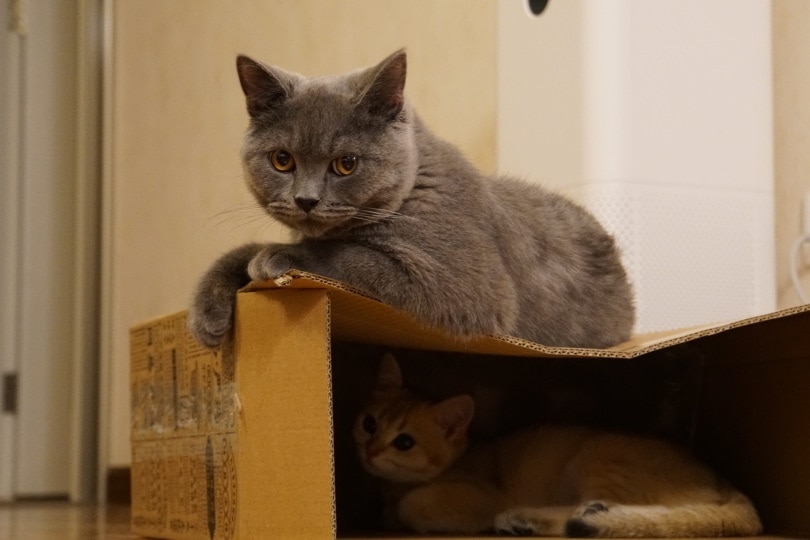
- Provides a feeling of safety and privacy
- Encourages hunting instincts
- Doesn’t usually require much rotation or maintenance
- Some cats are particular about their hiding places
6. Try Cat Puzzles
Cat puzzles are easy ways to mentally stimulate your cat and provide them with instant gratification. Puzzles should be used in conjunction with treats, and many people prefer high-value treats to encourage participation. Getting your cat started on puzzles can be difficult since it requires starting with easy puzzles and patience as your cat learns how to navigate puzzle solving.
Once your cat understands that puzzles mean they’ll receive a reward and positive praise from you, they’ll keep coming back for more. Puzzles also encourage brain health and problem-solving abilities.
- Provides instant gratification
- Good option for providing high-value rewards
- Builds confidence and brain health
- May take time to train your cat to use
7. Try an Obstacle Course
The fun part about obstacle courses is that you can build them to suit your space and your cat’s preferences. Many obstacle courses can be built from things you might already have around the house, like cardboard boxes, storage containers, and scratching posts. Get creative, but make sure you are putting things together in a way that is stable and maintains your cat’s safety.
Obstacle courses encourage physical activity and problem-solving, both of which provide mental stimulation for your cat. For added fun, you can use a toy to encourage your cat to play in the obstacle course.
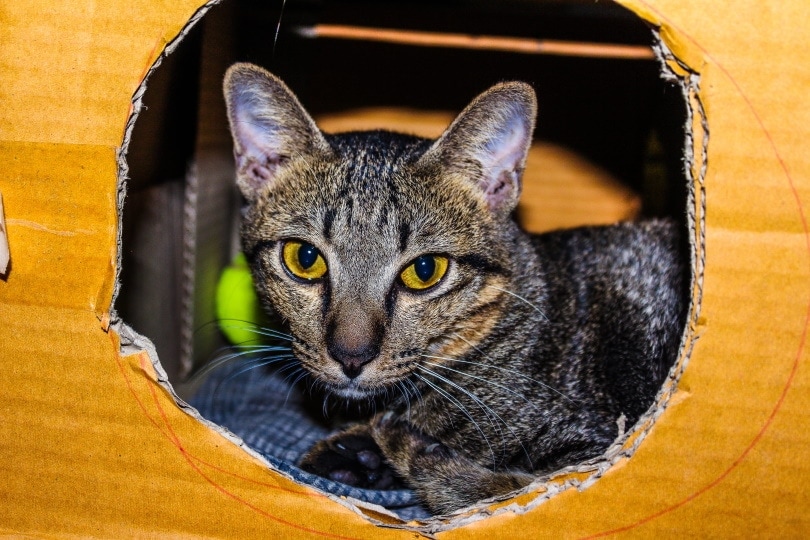
- Allows for creativity and use of objects that are on hand
- Encourages physical and mental stimulation
- Can be customized to suit your space and cat’s preferences
- Must be made with stability over creativity
8. Offer Climbing Surfaces
Cats love to climb and be high up. Your cat will appreciate plenty of climbing surfaces throughout the house, especially surfaces that double as scratchers. More active and agile cats will especially appreciate climbing surfaces that allow them to get high enough up that they can be left alone while watching things happen across the home.
You can build your own climbing surfaces or purchase sets that will allow you to set systems up for your cat. Make sure to keep the safety of your cat in mind over everything else, and always install things attached to the wall securely.
- Provides mental and physical stimulation
- Can double as scratching posts
- Allows your cat to get high up
- Can be customized to suit your space and cat’s preferences
- Must be made with stability over creativity
9. Add Window Perches
Window perches are the second-best thing to your cat being outdoors. Window perches allow your cat to monitor what’s happening outside the house, whether that’s bird feeders or the neighbor’s dog, but they keep your cat safe and secure within the house.
This option allows your cat to come and go from warm window spaces as they like, without you having to let them in and out. It can be really fun for your cat if you add interesting lawn ornaments, birdhouses, or bird feeders outside the windows as well.
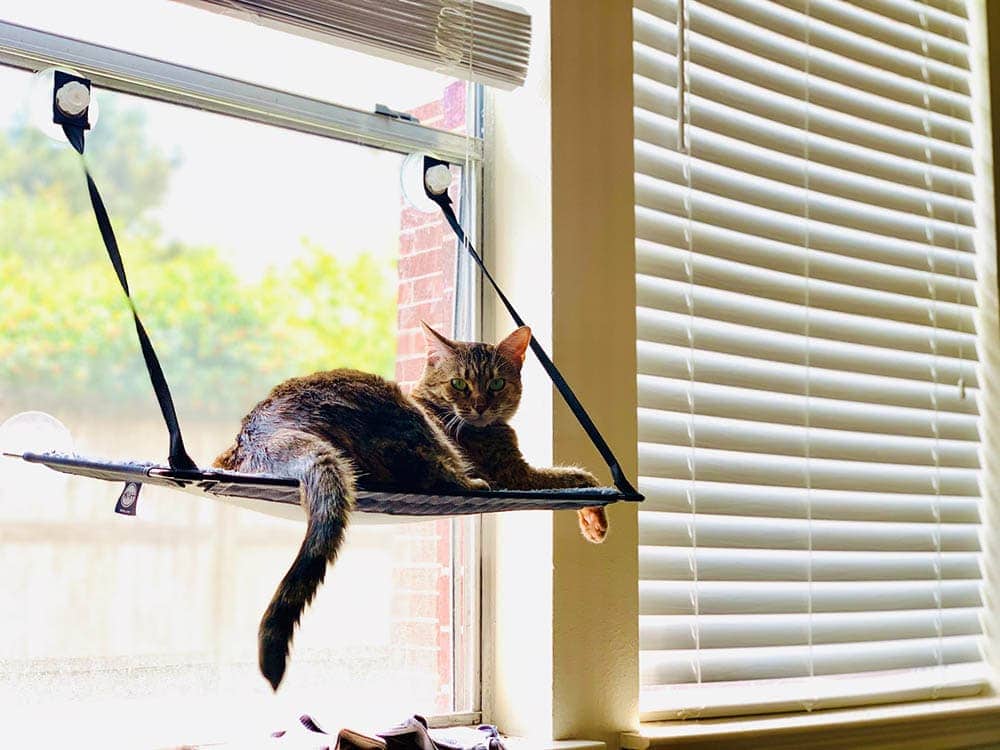
- Allows your cat to safely watch things happening outside
- The cat can come and go as they prefer
- Special additions outside the home can increase interest
- Requires your cat access to a specific area at all times
10. Provide Scratching Surfaces
Scratching is considered a need for cats because it keeps their claws healthy, stretches their toes, and releases pent-up energy. The good thing about scratchers is just how many varieties of them there are on the market. This means that you can have scratchers that double as climbing equipment, but you can also find scratchers that attach to doorknobs and furniture, as well as some that sit on the floor. This allows you to select scratchers that suit your cat’s age, weight, abilities, and preferences.
- Has a variety of health benefits for cats
- Multiple varieties available
- Can be tailored to your cat’s needs and preferences
- Not an option for declawed cats
11. Try Nighttime Playtime
Did you know that cats are primarily nocturnal animals? No matter how hard you try, you’re almost certainly never going to get your cat on your day/night sleep cycle, not to mention that cats sleep for more hours per day than people.
By offering playtime at night for your cat, you are catching them at their peak activity level. You don’t have to get up at 3:00 a.m. to play with your cat either but offering a late-night playtime before you go to bed can provide your cat with a fun source of mental stimulation.
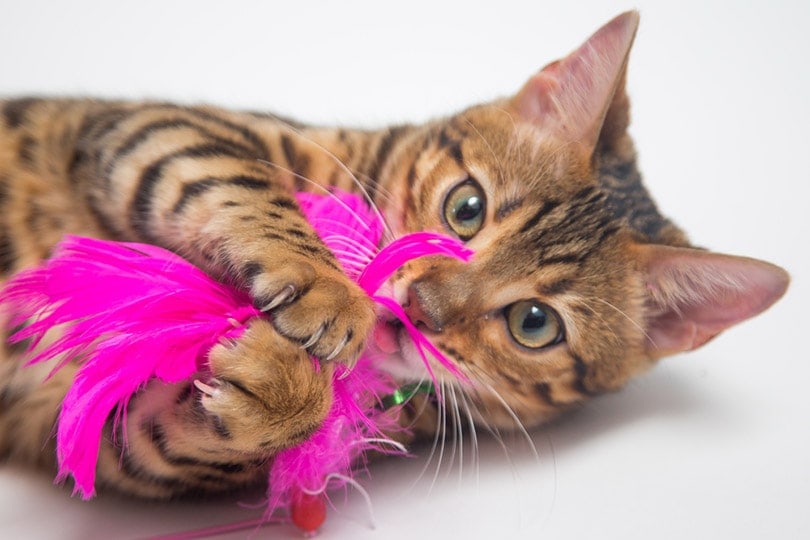
- Offers stimulation when your cat is most active
- Meets your cat’s nocturnal needs
- Offers a unique type of mental stimulation
- May require you to stay up later than normal
12. Consider a Feline Friend
This option may not be realistic for every home environment, but many cats can greatly benefit from having a non-human friend. Many cats prefer a feline companion, but some cats may also benefit from the addition of a canine companion in the home.
An animal friend not only offers your cat a more natural form of stimulation and interaction than you are able to offer them. That doesn’t mean that an animal friend can replace the necessary bonding and playtime between you and your cat, though!
- Can be beneficial to your cat’s mental health
- Offers a natural form of interaction for your cat
- Provides companionship when you aren’t around
- Won’t replace the time you should spend with your cat
13. Give Your Time
Nothing on this list can replace time spent with your cat! Cats should be given regular interaction with their people. This interaction should meet your cat where they’re at. This means that if your cat just wants to sit in your lap and relax, then you shouldn’t try to force a puzzle or game on them. If your cat is feeling a little bit frisky, then trying to force a nap isn’t going to go over well. Simply spending time with your cat is not only mentally stimulating for them, but it supports their overall well-being and encourages a stronger bond between the two of you.
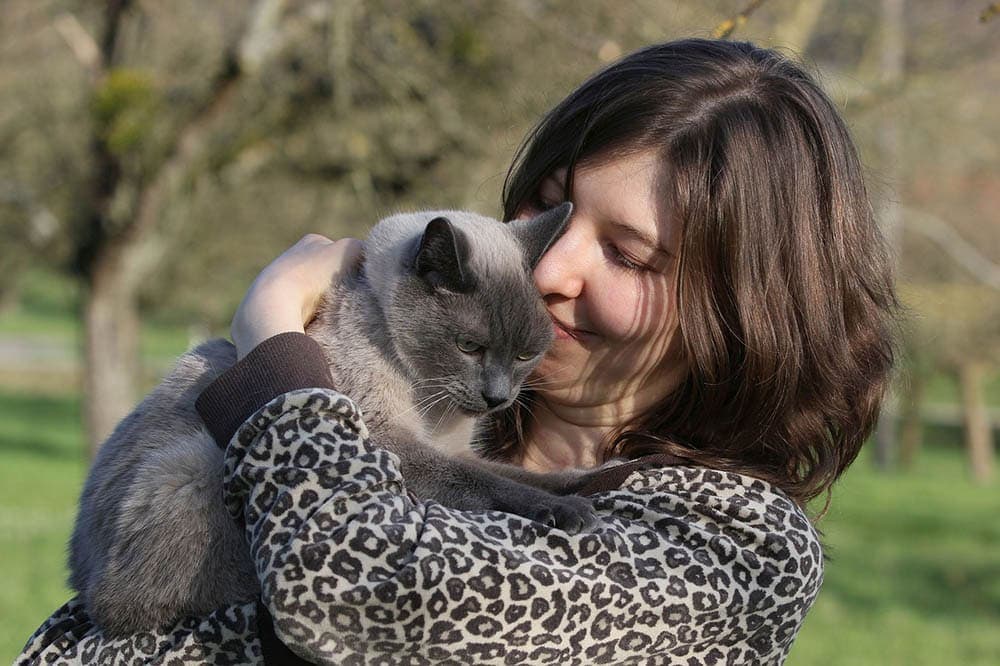
- Allows you to meet your cat where they are
- Provides mental stimulation and emotional support for your cat
- Builds a relationship between you and your cat
- Requires your time
- Cannot be replaced
Conclusion
Finding new and creative ways to provide mental stimulation for your cat will maintain their happiness and health in the long term. Every cat is different, so you may have to play around with options to find what works best. Some cats will have strong preferences for certain forms of mental stimulation, while other cats may only want to try one or two of these options. Make sure to find ways to encourage your cat and build their confidence as you are developing a stronger relationship and supporting their mental health needs.
Featured Image Credit: Onishchenko Natalya, Shutterstock





